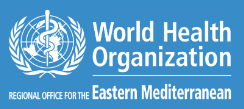A Comprehensive Analysis of Maternal and Reproductive Health Challenges in Pakistan: A Systematic Review
DOI:
https://doi.org/10.61171/Abstract
Background: Significant challenges regarding maternal and reproductive health persist in Pakistan, with the country facing substantial obstacles in accessing and utilizing services associated with reproductive, maternal, neonatal and child health (RMNCH). Despite various initiatives, Pakistan continues to grapple with an alarming maternal mortality rate due to biological, socioeconomic, cultural factors, as well as inadequate sexual and reproductive health (SRH) services. Persistent challenges such as a shortage of trained workforce, inadequate infrastructure, educational limitations, and societal restrictions, pose major roadblocks to improving maternal and reproductive health outcomes. This analysis aims to address the existing gaps in research and provide actionable recommendations for policy and practice.
Methods: A comprehensive analysis adhered to Preferred Reporting Items for Systematic Reviews and Meta-Analyses (PRISMA) guidelines was conducted, encompassing peer-reviewed journals and grey literature published between 2010 and 2024. The review focused on studies in English on maternal and reproductive health topics, sourced from databases including PubMed, Google scholar, Web of Science, Embase, Cochrane and MeSH terms. A total of 20 original, peer-assessed studies, comprising quantitative and qualitative research, were reviewed. Two authors independently screened the titles, abstracts and full-texts from the studies.
Results: This systematic review synthesizes findings from 20 major studies on maternal and reproductive health issues in Pakistan. This review is qualitative in nature. Qualitative design were predominant comprising 35% (n= 7) of studies whereas quantitative approaches accounted for 10% (n=2). Cross-sectional surveys constituted 20% (n=4) of the studies, mixed-methods 15% (n=3), and other methodologies 20%. Most notably, no case-control or cohort studies were included. All studies were conducted in Pakistan focusing on maternal and reproductive health challenges such as maternal and child mortality, antenatal care, delivery, postnatal care, obstetric care barriers and socio-cultural factors. Of the studies, 70% (n=14) assessed maternal and reproductive health issues in Pakistan, while 30% (n=6) examined obstetric care barriers. Study populations included females of reproductive age, pregnant women, and postnatal women. Additionally, 60% (n=12) of studies focused on maternal and child mortality rates and 40% (n=8) addressed reproductive, maternal, newborn, and child health (RMNCH). Studies on access barriers from maternal healthcare providers examined knowledge and competences, quality of care, and training gaps.
Conclusion: This systematic review sheds light on a multifaceted landscape characterized by high maternal, fetal, and child mortality rates and persistent reproductive health issues in resource-limited countries like Pakistan. It highlights the impacts of educational gaps, socioeconomic status, cultural norms, political instability and systemic constraints that further complicate healthcare delivery. The review identifies significant barriers and opportunities for improvement, advocating for community-based programs, women’s empowerment, integrated healthcare frameworks, and strengthened healthcare provider training and supervision to improve maternal and newborn health outcomes and ensure a healthier future for mothers and children in Pakistan.
Key words: Maternal Health, Reproductive Health, Pakistan, RMNCH, Maternal Mortality, Socioeconomic factors, SRH services, Healthcare barriers, Qualitative Research, PRISMA guidelines
Downloads
Downloads
Published
Issue
Section
License
Copyright (c) 2024 Bisma Akhtar (Author)

This work is licensed under a Creative Commons Attribution 4.0 International License.









